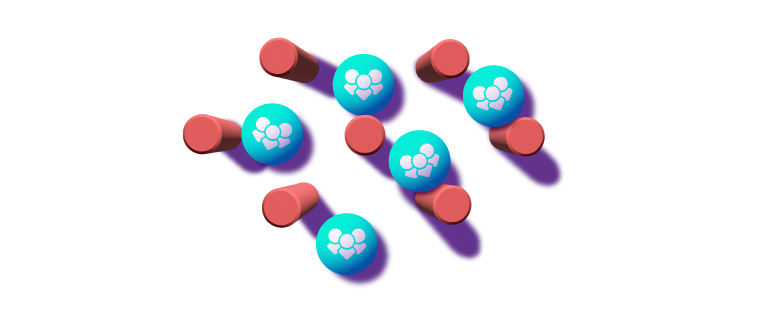Agile workflow
7 min read

Understanding Lean Agile and the 5 Lean Principles
Fri Jul 02 2021
Waste is expensive! 💸 It’s paying someone not do any real work, paying for supplies you don’t need, or paying for team members to sort out a preventable issue. Lean agile aims to eliminate wasteful resources and tasks for improved efficiency and reduced costs — while never sacrificing quality. In fact, lean agile prioritizes bringing value to the customer with every decision that’s made.
Lean agile is a development method that helps teams identify waste and refine processes. It’s a guiding mindset that facilitates efficiency, effectiveness, and continuous improvement.
Consider this: You probably work a lot better when your desk isn’t completely covered with a mess of things you don’t need. When you eliminate distractions and waste, it establishes an organized workspace and workflow. This helps you focus on what’s most important, ensuring you work efficiently and effectively.
Here, you’ll learn more about the development of lean, the benefits of lean agile, and the five core principles of lean.
The development of lean agile
Lean agile, or lean software development, originates from the principles of lean manufacturing. The concept was brought into manufacturing to improve profits by reducing costs instead of solely relying on increased sales. If a company can eliminate waste and become more efficient, it can save money, thereby increasing overall profits.
Lean agile is an agile methodology that, in basic terms, is quite simple: improve efficiency by eliminating waste. Unlike traditional, waterfall project management, which dictates a set plan laid out by a project manager, lean agile strives to reduce all tasks and activities that don’t provide real value. This helps ensure everyone involved in a project or product development can work at optimal efficiency.
If you’re looking to dive into the history of lean agile, Lean Enterprise Institute Inc., founded in 1997 by James P. Womack, PhD, is a leading resource for lean methodology. It aims to help people and teams work better through lean thinking and practices.
Lean practices are popular because they can be applied to other agile approaches and software development methods. Lean agile provides a clear application for scaling agile, which is often difficult for large or growing organizations.
The benefits of lean agile
In case you’re not on board with lean agile yet, let’s review its main benefits.
Waste less time
Time is wasted when processes don’t run smoothly. In lean manufacturing, it’s important for goods and services to be delivered quickly and effectively. No one's time should be wasted on the job, and companies should aim for shorter lead times without sacrificing quality.
Wasting time in any industry is expensive, but it’s particularly important to pay attention when working in agile software development. Even a small bottleneck or broken process can completely throw off a workflow or product deadline. Lean agile helps development teams manage time effectively to ensure everyone is utilized, no one's time is wasted, and roadblocks are anticipated in advance.
Reduce costs
When businesses eliminate waste, they save money. In its original form, lean manufacturing ensured companies had the right amount of materials, employees, and working hours at any given time. Overproduction, overhiring, or simply having too many materials to store are expensive wastes that can be eliminated through better management of systems and processes.
Any business, no matter the industry, will save money with improved efficiency. Lean agile ensures that waste is continually eliminated and agile teams continue to fine-tune processes for optimal efficiency.
Improve work quality
With lean agile, it’s not only about efficiency — it's about maintaining efficient processes while bringing a quality product to customers and stakeholders. When businesses intentionally improve processes, they remain competitive. Lean principles consider the customer value of any action or decision to ensure needs are always met or exceeded.
The five principles of lean agile
There are five core principles for implementing lean methodology:
- Value
- Value stream
- Flow
- Pull
- Perfection
These principles describe a five-step process that guides the implementation of lean techniques for manufacturing, software development teams, and other agile practicing industries.
1. Identify value
The first step requires you to step into the shoes of the customer. Value is what the customer needs and wants from a specific project or product.
Consider from the customers’ point of view: What are their expectations? What are they willing to pay for? How do they want their needs met?
Sometimes, customers may be unable to define exactly what they’re looking for — especially if it’s a new product or technology they’re unfamiliar with.
In any case, the project cannot move forward without clearly identifying what it will take to provide customer satisfaction. You’ll need to identify the end goal (value) customers are hoping to find with the product or service.
2. Map the value stream
Next, the team visually maps each of the steps and processes it will take to bring the product from inception to delivery. By making each step visible and always keeping the value top-of-mind, it’s easier to see which steps don’t directly contribute to continuous delivery. Once wasteful steps are found, the team finds ways to eliminate those steps or reduce them as much as possible.
Getting rid of waste ensures your company doesn’t unnecessarily spend money on steps and processes that don’t add value. And — most importantly — the customer gets exactly what they’re looking for.
3. Create flow
Once the waste is eliminated from the value stream, the next step is ensuring the remaining processes work as effectively and efficiently as possible, which means no delays, disruptions, or bottlenecks. It’s important for the steps that create value to work in tight sequences to ensure the product flows smoothly toward the customer.
In order to achieve this kind of agile transformation, lean businesses must train their employees to be adaptive and multi-skilled, create cross-functional teams, break down and reconfigure steps in the production, and balance employee workloads.
4. Establish a pull system
With enhanced flow, your team can deliver products and services faster. A pull system enables “just-in-time” manufacturing and delivery, limiting inventory and work in progress (WIP) items by only producing enough to meet customer demand.
By establishing a pull system, you create products and services as needed as opposed to creating them in advance, which leads to a growing inventory or list of tasks that need to be stored and managed — draining your bottom line.
5. Seek perfection
By completing steps 1-4, waste is eliminated — for now. However, the work is never done. There is always a process that could be improved, and there will always be steps in project and product development that waste time and money or don’t deliver value. That’s why the fifth step of seeking perfection is key.
Lean takes time to implement, and going through the process once is not enough. Build a continuous improvement mindset into your company culture, and never settle for the same old.
Lean agile made easy
Lean prioritizes the elimination of waste to improve efficiency. This helps teams continually improve their processes while emphasizing the tasks that bring the most value to customers.
If you’re looking to learn about how agile principles work with other development approaches, we recently covered eight different software development methodologies, including rapid application development, extreme programming (XP), and other agile frameworks.
Easy Agile is dedicated to helping teams improve their processes and agile methods. Our Jira plugins help product owners, Scrum Masters, and development teams align around product goals, workflows, and customer needs. The tools are simple to use, collaborative, flexible, and they work seamlessly with Scrum, Kanban boards, and other agile processes managed in Jira software.
You can contact our team or watch a demo to learn more about our tools and follow our blog for the latest content on Jira, agile, lean, and the development process.



